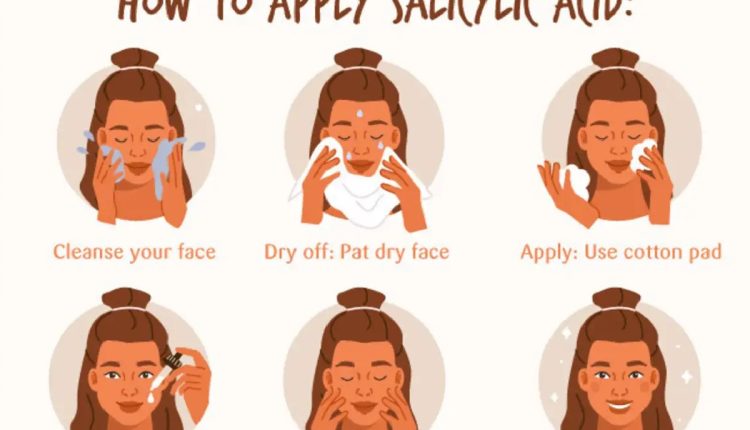Introduction: The Skincare Staple You Shouldn’t Ignore
If you’ve ever dealt with acne, blackheads, or congested skin, chances are you’ve heard of salicylic acid. As a board-certified dermatologist, I often recommend this powerhouse ingredient to patients looking for effective, science-backed solutions for clearer skin.
Salicylic acid is more than just a trend—it’s a tried and tested beta hydroxy acid (BHA) that’s been used in dermatology for decades. Whether you’re a teenager battling breakouts or an adult managing oily skin, salicylic acid can be a game-changer.
What Is Salicylic Acid?
Salicylic acid is a beta hydroxy acid (BHA) derived from willow bark. Unlike alpha hydroxy acids (AHAs), which are water-soluble and work on the skin’s surface, salicylic acid is oil-soluble. This means it penetrates deep into the pores, making it especially effective for:
-
Acne and blackheads
-
Whiteheads and clogged pores
-
Oily and acne-prone skin
-
Keratosis pilaris and rough patches
How Salicylic Acid Works
Salicylic acid helps to exfoliate the skin from the inside out. Here’s how it works:
-
Penetrates oil-filled pores
Its oil-soluble nature allows it to reach deep into the sebaceous glands. -
Dissolves dead skin cells
It breaks down the bonds between cells, helping shed the outermost layer of skin and prevent clogging. -
Reduces inflammation
Its anti-inflammatory properties calm red, irritated skin—making it ideal for inflamed acne. -
Antibacterial benefits
It helps prevent acne-causing bacteria from proliferating.
Benefits of Salicylic Acid
| Skin Concern | How Salicylic Acid Helps |
|---|---|
| Acne & Pimples | Clears out clogged pores and reduces breakouts |
| Blackheads | Loosens sebum and dead skin within the pores |
| Oily Skin | Regulates excess oil production |
| Enlarged Pores | Helps refine and minimize pore appearance |
| Dull Texture | Improves skin tone and smoothness |
Who Should Use Salicylic Acid?
Best suited for:
-
Oily to combination skin types
-
Mild to moderate acne
-
Teens and adults with clogged or textured skin
Avoid if you have:
-
Very dry or sensitive skin
-
Allergy to aspirin (salicylic acid is chemically similar)
-
Active eczema, rosacea, or open wounds (consult your dermatologist first)
How to Use Salicylic Acid in Your Routine
-
Face Wash (0.5%–2%): Great for daily gentle exfoliation
-
Toners: Clears pores post-cleansing
-
Serums or Spot Treatments (2%): More targeted treatment for acne-prone areas
-
Peels (2%–10%): Deeper exfoliation—best done under professional guidance
Precautions and Side Effects
Salicylic acid is generally safe, but overuse can lead to irritation, dryness, and flakiness. To avoid this:
-
Use a gentle cleanser and moisturize regularly
-
Avoid combining with strong actives (e.g., retinol, benzoyl peroxide) unless advised
-
Always wear broad-spectrum sunscreen—exfoliation makes your skin more sensitive to the sun
Product Recommendations (Dermatologist-Approved)
-
CeraVe Renewing SA Cleanser – Gentle and fragrance-free
-
Paula’s Choice BHA Liquid Exfoliant (2%) – Cult-favorite for blackheads
-
La Roche-Posay Effaclar Medicated Gel Cleanser – Effective for oily acne-prone skin
-
The Ordinary Salicylic Acid 2% Solution – Budget-friendly and targeted
When to See a Dermatologist
While salicylic acid works for many, persistent or severe acne may need a prescription treatment or a combination therapy plan. If your skin doesn’t improve after 6–8 weeks, or worsens, consult a board-certified dermatologist for personalized care.
Final Thoughts: Clear Skin, One Step at a Time
Salicylic acid is a foundation ingredient in dermatology for a reason. It’s effective, versatile, and works beneath the surface to treat what truly causes acne and dull skin. Used correctly, it can help you achieve smoother, clearer, and more balanced skin without harshness.
Remember—consistency, not intensity, is key in skincare. Start slow, stay gentle, and your skin will thank you.


Comments are closed.